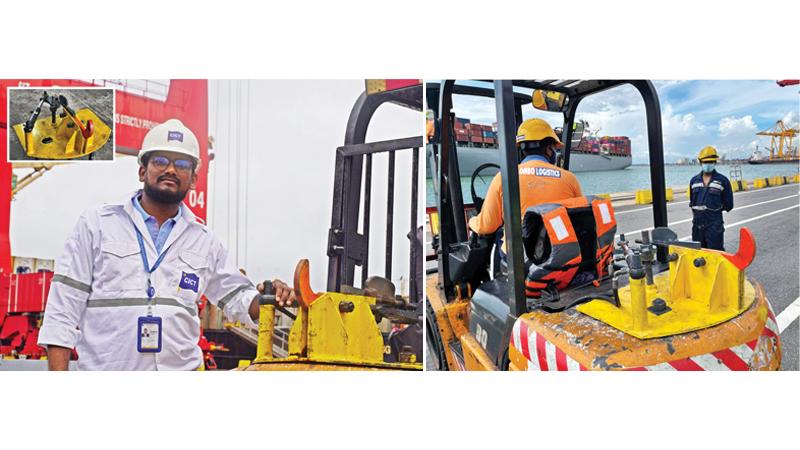
A hydraulically-operated quick-release hook invented by CICT’s Senior Engineer Charith de Silva enables a fork lift operator towing a mooring rope that can weigh as much as a ton to be looped over a bollard, to instantly release the rope if the operator feels a pull in the opposite direction, preventing the forklift and possibly its operator being dragged into the sea by the ship’s movement.
The hook installed on the counterweight behind the driver’s seat integrates with the forklift’s own hydraulic valve box, making it operable via the standard functional levers used by the operator to manipulate the machine, and enabling a split-second release of the mooring rope if necessary.
The quick-release hook is to be fitted on four, three-ton forklifts at CICT, and its inventor says he will make the design available to other port operators free of royalty, as its purpose is the safety of port workers and their equipment.
“This hook is particularly important when mooring the very large ships that call at CICT,” de Silva said. “Their mooring ropes are very strong and heavy and cannot be dragged and tied to a bollard manually, so we have to use forklifts to tow the ropes. But if a rope is accidently winched back during the process, or the ship’s movement pulls the rope back, the forklift can be dragged along with it. This is the risk we set out to eliminate.”
“We came across multiple options in our research, but we wanted to find an in-house solution that was cost-effective, durable, reliable and safe, and most of all, as simple as possible to implement with existing materials and equipment within our terminal.
“I am grateful to my team for all the inputs and to the management of CICT for the opportunity and the encouragement I received to look for a home-grown solution to a problem that is common to most terminals,” he said.
CICT CEO Jack Huang said, “Safety and efficiency are bywords for us, and we are constantly looking for ways to improve processes through innovation and technology. Our engineers are an excellent example of this approach and are an inspiration to their counterparts. We look forward to more innovations from them.”
